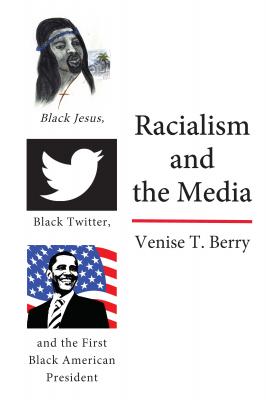ТОП просматриваемых книг сайта:
Racialism and the Media. Venise T. Berry
Читать онлайн.Название Racialism and the Media
Год выпуска 0
isbn 9781433172915
Автор произведения Venise T. Berry
Жанр История
Серия Black Studies and Critical Thinking
Издательство Ingram
The difficulty involved in identifying, processing, interpreting, comprehending, and retaining the subtle and symbolic undertones when exposed to humor is the key to understanding the ultimate harm that is done by the use of stereotypical tropes and tactics in comedy. (p. 5)
←20 | 21→
Humor is usually based on stereotypical ideas and images. Stereotypes through humor provide easily recognized and understood historical impressions of how members of black culture might think and act. Unfortunately, when ethnic humor is based on normalized and accepted stereotypes racialism is involved and that means there is a problem with funny.
References
48 Hours. (1982). IMDb. Retrieved from http://www.imdb.com/title/tt0083511/
Adams-Bass, V., Stevensen, H., & Korzin, D. (2014). Measuring the meaning of black media stereotypes and their relationship to the racial identity, black history knowledge, and racial socialization of African American youth. Journal of Black Studies, 45(5), 367–395.
Amditis, J. (2013, May). White men can’t joke: Racial hierarchy and traditional race narratives in humor and comedy. Retrieved from http:/www.academia.edu/3539690/White_Men_Cant_Joke_Racial_Hierarchy_And_Traditional_Race_Narratives_in_Humor_and_Comedy [Accessed 1 Apr].
Amos and Andy [TV Show]. (1951–1953). IMDb. Retrieved from http://www.imdb.com/title/tt0043175/
Amos and Andy [Radio Show]. (1928–1955). Retrieved from https://www.amosandandy.org/
Another 48 Hours. (1990). IMDb. Retrieved from http://www.imdb.com/title/tt0099044/
Apte, M. (1987). Ethnic humor vs. ‘sense of humor’: An American sociocultural dilemma. American Behavioral Scientist, 30, 27–41.
Banjo, O. (2011). What are you laughing at?: Examining white identity and enjoyment of black entertainment. Journal of Broadcast and Electronic Media, 55(2), 137–159.
Banjo, O., Appiah, O., Wang, Z., Brown, C., & Walther, W. (2015). Co-viewing effects of ethnic oriented programming: An examination of in-group bias and racial comedy exposure. Journal of Mass Communication Quarterly, 92(3), 666–680.
Berg, M. (2016, September 27). The highest paid comedians 2016: Kevin Hart dethrones Jerry Seinfeld as cash king of comedy with $87.5 million payday. Forbes Magazine. Retrieved from https://www.forbes.com/sites/maddieberg/2016/09/27/the-highest-paid-comedians-2016-kevin-hart-out-jokes-jerry-seinfeld-with-87-5-million-payday/#453270e7320e
Beverly Hills Cop series. (1984, 1987, 1994). IMDb. Retrieved from https://www.imdb.com/title/tt0092644/
Bogle, D. (1973/1989/1994/2001). Toms, coons, mulattoes, mammies and bucks: An interpretive history of blacks in films. New York, NY: Continuum & Bloomsbury.
Bostick, C. (2010). A barrel of laughs or a river of tears: The problem with African Americans using comedy to air dirty laundry in critical race perspectives. Georgetown Journal of Law and Modern Critical Race Perspectives, 2(2), 257–276.
Box Office Mojo. (2018, February 12). Kevin Hart. Retrieved from http://www.boxofficemojo.com/people/chart/?id=kevinhart.htm
←21 | 22→
Brigham, J. C. (1971). Ethnic Stereotypes. Psychological Bulletin, 76, 15–38.
Bryant, A., Black, A., Land, F., & Porra, J. (2013). What is history? What is IS history? And why even bother with history? Journal of Information Technology, 28(1), 1–17.
Burr, S. (2001). Television and societal effects: An analysis of media images of African Americans in historical context. Gender, Race and Justice, 4(J), 159–181.
Cooper, E. (2007). Is it something he said The mass consumption of Richard Pryor’s culturally intimate humor. The Communication Review, 10, 233–247.
Cosgrove-Mather, B. (2006, February 3). Dave Chappelle: ‘I wasn’t crazy’. CBS/AP. Retrieved from https://www.cbsnews.com/news/dave-chappelle-i-wasnt-crazy/
Dixon, T. (2008). Network news and racial beliefs: Exploring the connection between national television news exposure and stereotypical perceptions of African Americans. Journal of Communication, 58, 321–337.
Dreamgirls. (2006). IMDb. Retrieved from http//www.imdb.com/title/tt0443489/
Entman, R. (1992, Summer). Blacks in the news: Modern racism and cultural change. Journalism Quarterly, 69(2), 341=361.
Fairclough, N. (2003). Analyzing discourse: Textual analysis for social research. New York, NY: Routledge.
Farley, C. J. (2005, May 14). Dave speaks. Time. Retrieved from http://content.time.com/time/magazine/article/0,9171,1061512-6,00.html
Fetchit, Stepin [Biography]. IMDb. Retrieved from http://www.imdb.com/name/nm0275297/bio
The Fifth Element. (1997). IMDb. Retrieved from http//www.imdb.com/title/tt0119116/
Fiske, J. (1984). Social cognition. Reading, MA: Addison-Wesley.
Fojioka, Y. (1999, Spring). Television portrayals and African American stereotypes: Examination of television effects when direct contact is lacking. Journalism and Mass Communication Quarterly, 76(1), 52–75.
Foxx, Redd [Biography]. Retrieved from https://www.biography.com/people/redd-foxx-9300106
The Fresh Prince. (1990–1996). IMDb. Retrieved from http://www.imdb.com/title/tt0098800/
Friday. (1995). IMDb. Retrieved from http://www.imdb.com/title/tt0113118/
Gandy, O. (1998). Communication and race: A structural perspective. New York, NY: Oxford University Press.
Get Hard. (2015). IMDb. Retrieved from http://www.imdb.com/title/tt2561572/
Gillota, D. (2013). Ethnic humor in multiethnic America. New Brunswick, NJ: Rutgers.
Good Times. (1974–1979). IMDb. Retrieved from http://www.imdb.com/title/tt0070991/
Hinton, P. (2000). Stereotypes, cognition and culture. Philadelphia, PA: Taylor and Francis.
Hinton,

